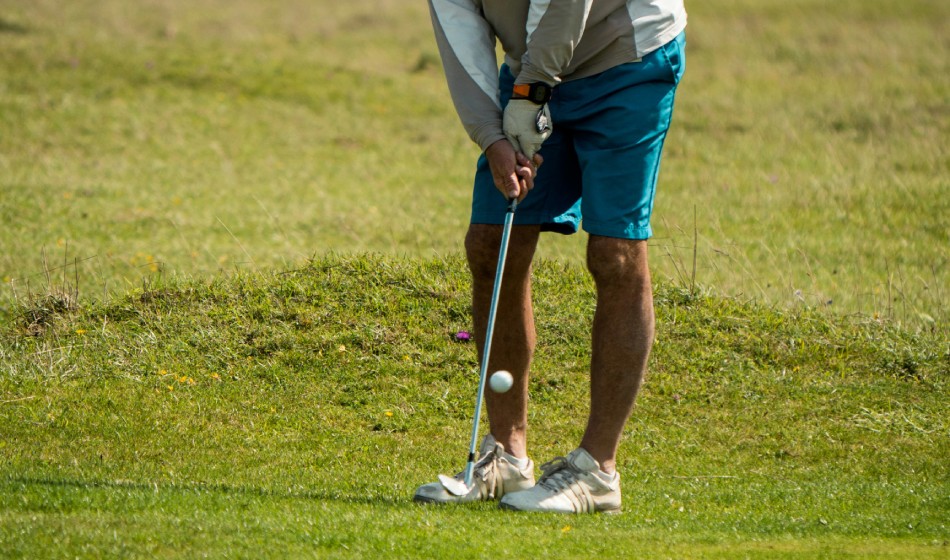
Chip in Golf: Choose between Rolled, Laid Out, High or with Brake + Bonus
17 de February de 2024
In golf, the chip is an essential skill that can make the difference between a good and a bad day on the course. Each situation demands a different strategy, and knowing the chip techniques is key to improving your game. Do you prefer a rolling chip, a low chip, a high chip, or a chip with brake? The choice is not trivial, and here we will help you understand when and how to implement each one.
Whether you’re looking to approach the hole with precision or need to overcome an obstacle, mastering the different types of chips is fundamental. It’s not just about technique, but about knowing how to read the terrain and adapt your game to the circumstances. Let’s dive into the world of the chip, so that the next time you face the green, you do it with confidence and knowledge.
Additionally, as a bonus, we will reveal some practical tips that will turn you into a chip expert in no time. Get ready to learn how to give the ball that special effect that brings you closer to success, shot after shot. Let’s get started!
What is the chip technique
The chip technique in golf is an essential skill that every golfer should master. It is a short shot, aiming for precision rather than distance, ideal for situations where we need to overcome a nearby obstacle and want the ball to land softly on the green.
This type of shot is performed with a shorter and more controlled swing. Often, golfers use it when they are close to the green but not close enough for a putt. The key to the chip is to get the ball to roll towards the hole after a brief flight.
There are various chip techniques, depending on the situation and the type of terrain. Some of the most common include:
- Rolling chip: a club with less loft, like a 7 or 8 iron, is used so that the ball rolls more after landing.
- Low chip: with this shot, the ball has a longer flight and less roll, ideal for overcoming low obstacles.
- High chip: it is executed with a club with more loft. It seeks a soft landing and little roll, perfect for complicated situations near the green.
- Chip with brake: to stop the ball quickly on the green, it is hit with a more vertical swing and using a club with a lot of loft.
Perfecting the chip technique can make a difference in your short game. Practice different types of chips to adapt to any scenario on the field. With patience and practice, this skill will help you lower your score and improve your results.
Proper equipment for effective chipping
When talking about effective chipping in golf, equipment is key. It’s not just a matter of skill, but also of having the right tools. Here we tell you what you need to improve your technique and achieve those short shots with mastery.
Choose the right wedge. This club is essential for chipping. There are different types: sand wedge, lob wedge, gap wedge, and pitching wedge. Each one has its purpose and ideal loft angle for different situations.
Quality in balls. Do not underestimate the importance of a good golf ball. Look for one that offers the perfect balance between distance and control, especially around the green.
Golf gloves. A good grip is fundamental and golf gloves provide that extra stability in your hands, especially in wet or hot conditions.
Do not forget the importance of stance and grip. Although they are not “equipment” per se, proper technique enhances the effectiveness of your clubs. Practice constantly to perfect these fundamental aspects.
Useful accessories such as ball markers, tees, and a good divot tool are also part of the equipment you should consider to keep the course in good condition and your game on track.
And remember, equipment can enhance your game, but constant practice is what will really take it to the next level. Equip yourself properly and enjoy the art of chipping!
Exercises to improve precision in chipping
Improving precision in chipping can drastically change your game and reduce your score. Here we present practical exercises for you to perfect this vital skill in golf.
Practice with specific targets. Place several targets at different distances and heights in the practice area. Try to reach each one with the minimum number of strokes. This exercise sharpens your ability to control the distance and trajectory of the chip.
The coin game. Place a coin on the green and try to make the ball bounce on it. This exercise, although it seems simple, requires millimetric precision and improves your touch and sensitivity when hitting.
- Use different clubs to vary the height and distance of the chip.
- Focus on maintaining a consistent technique with each stroke.
Control of force. Set up a series of circles around the hole using ropes or some other material. Practice chipping within these circles to improve your control of force and precision in approaching the hole.
Remember, consistency is key. Dedicate time to practicing these exercises and you will notice a substantial improvement in your short game. Go for those birdies!
Common mistakes and how to avoid them in chipping
In the art of chipping, small slips can translate into big challenges. These are some common mistakes and how you can avoid them to improve your game.
Incorrect foot position: Make sure your feet are slightly open and aligned with the target. This will facilitate a controlled and precise swing.
Excessive arm swing: In chipping, the movement should come more from the shoulders than from the arms. Practice smooth and controlled movements to avoid erratic shots.
Wrong choice of club: Not all chips are the same. Evaluate the distance and obstacle before choosing the club. A sand wedge might be ideal for a high chip, while a pitching wedge might work for a more laid-out shot.
Lack of concentration: The chip requires precision. Keep your focus on the point of impact and visualize the desired trajectory before making the swing.
Avoid these common mistakes and you will see how your chipping technique improves significantly. Remember, constant practice is key to mastering this aspect of golf.
In golf, the chip is a strategic card that can change the course of your game. Whether opting for a rolling chip, a low chip, a high chip, or a chip with brake, the key is knowing when and how to execute each one. Analyze the terrain, assess the conditions, and trust your instinct to make the best decision. Remember, practice makes perfect. Dedicate time to perfecting each technique and do not be afraid to experiment in different game situations. Great golfers are forged on the practice field, polishing those details that make the difference.
As a bonus, always maintain a positive mental focus. Golf is as much a physical game as it is psychological. A well-executed chip can be the boost you need to improve your score. So, take a deep breath, visualize the trajectory, and execute with confidence.
At the end of the day, the best chip is the one that suits your style and the challenge presented by each hole. We have given you the tools, now it’s your turn to shine on the green. Go out and conquer the course with your chipping skills!
